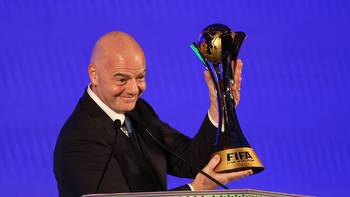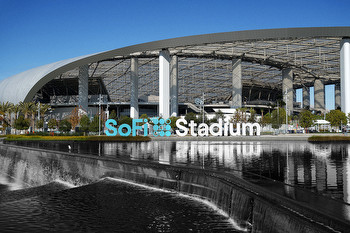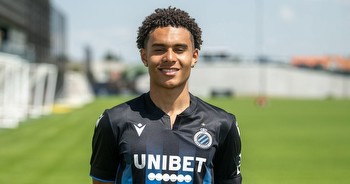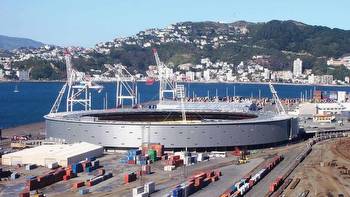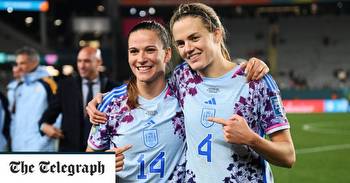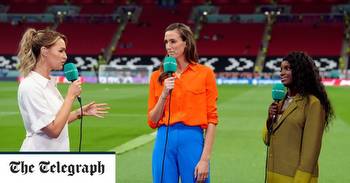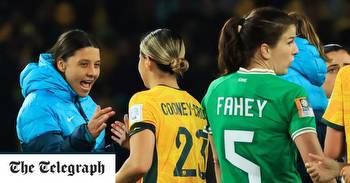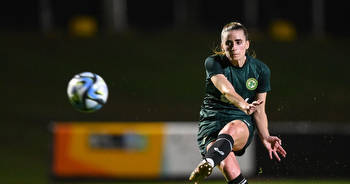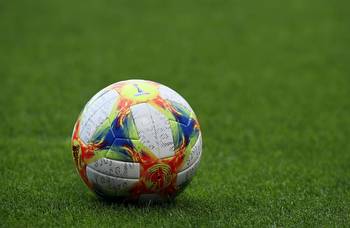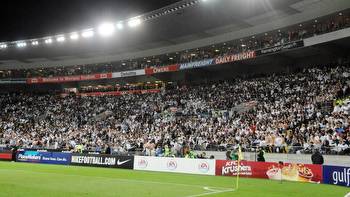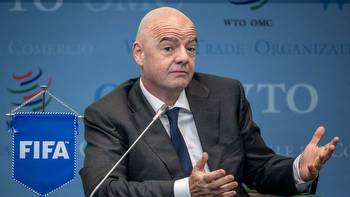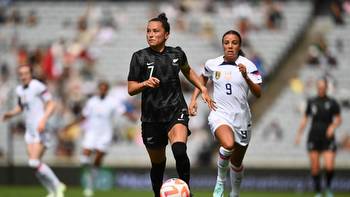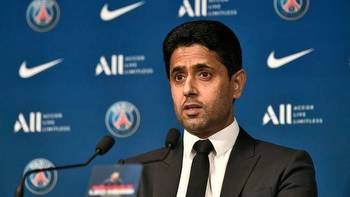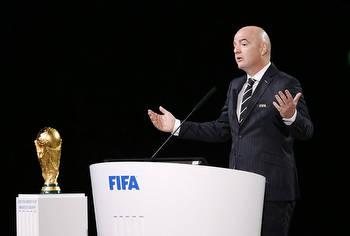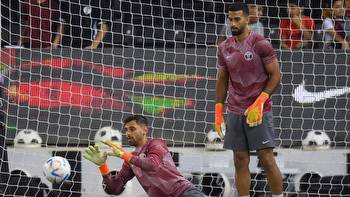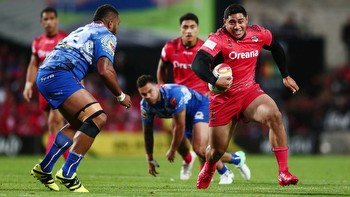Inside the FIFA roadshow: Private jets, curious customs and an army of blue suits
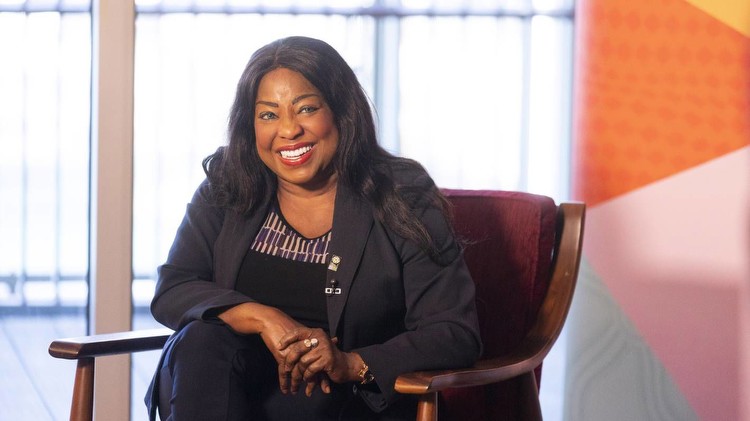
The instructions were clear: dress like you’re meeting the Queen and address her only as Madam Samoura.
It was quite confusing advice given the passing of Queen Elizabeth II nine months prior. Was I to wear something suitably sombre? I eventually landed on smart business attire for my audience with Fatma Samoura, the first woman to serve as secretary general of football’s world governing body.
A month out from the start of the FIFA Women’s World Cup, Madam Samoura was in New Zealand to spruik the tournament – as the country’s enthusiasm for the event at that stage languished somewhere between apathy to out-and-out disinterest.
We arrived at the Park Hyatt, a luxury hotel on Auckland’s waterfront that would become base camp for FIFA officials throughout the Women’s World Cup, and waited to be whisked into a suite where I would be given the opportunity to ask Madam Samoura my pre-vetted list of questions.
But really, Madam Samoura, an experienced diplomat, had her own agenda that she steadfastly clung to.
She expertly diverted any questions back to her prepared talking points around the investment FIFA had made in the women’s game, the need for broadcast and commercial partners to also “play their part” and FIFA’s role in championing inclusion and diversity.
At one point during the interview, I looked down on the coffee table and saw a photo of myself staring back at me. FIFA aides had prepared a dossier on each of the journalists interviewing the secretary general that day.
As I was escorted from the suite, once my allotted time with the secretary general was up, I remarked to one of the New Zealand-based communications staff, contracted by the Zurich-based organisation for the tournament, whether things were always this formal.
“They’re very… Swiss,” was the staffer’s attempt at an explanation for the organisation’s very particular way of doing things.
Two months on, the FIFA roadshow has rolled out of town following what has been universally described as its most successful women’s tournament yet.
The ninth edition of the event attracted record crowds and television audiences and unprecedented mainstream media interest, reaching a fever pitch following Spain’s 1-0 win over England in Sunday’s showstopper of a final in Sydney.
The tournament brought not only some of the world’s best footballing talent to New Zealand’s shores, but exposure to the colossal FIFA empire – a world of rigid adherence to rules, curious customs and lavish spending.
The jet set
The arrival of the FIFA tournament in New Zealand set plane spotting websites and blogs abuzz, with sightings of private jets parked up on the tarmac in host city airports. Earlier this month, news wire service the Australian Associated Press (AAP) documented FIFA President Gianni Infantino’s staggering travel schedule over the first three weeks of the tournament, clocking more than 50 hours in the air.
But publicly-accessible flight data reveals there were two private jets – operated by Qatar Executive, the business jet subsidiary of Qatar Airways – flying regularly between host cities in New Zealand and Australia, as well as the Pacific Islands, where Infantino made trips to visit Oceania Football Confederation (OFC) members during the month-long tournament. It’s understood FIFA Secretary General, Fatma Samoura, also had a private jet at her disposal.
When Infantino landed FIFA’s top job in 2016 in the wake of a corruption scandal that brought down members of the leadership, he promised to restore the “credibility and integrity” of the organisation that had become a byword for greed.
“The money of FIFA has to be used to develop football. It’s your money, not the money of the FIFA president,” Infantino told delegates at the Extraordinary Congress prior to his narrow election.
To enhance his credentials as the great reformer, Infantino turned up to his first official appointment on a budget airline.
PR stunt done, the private jet travel soon followed.
The travel also appears to be at odds with FIFA’s public commitment to environmental sustainability.
The organisation has set itself a lofty goal of being climate neutral by 2040, promising to “reduce all avoidable emissions”.
attempted to put questions to FIFA about its use of private jets throughout the tournament, and, how it aligns with its messaging around sustainability. But the organisation did not address those questions.
The lavish expenditure did not stop at private jets.
One source, familiar with the tournament logistics, told that rather than checking in and out of their hotel suites at the Park Hyatt, FIFA reserved the rooms for its VVIPs until the end of the semifinal stage of the tournament.
Suites at the hotel start at $1240 a night, with the executive suite priced at $3440 a night.
Despite the extravagance, FIFA were said to be incongruously stingy in other areas.
The world governing body, which last year raked in $US5.77 billion ($9.73b) in revenue, apparently quibbled over paying the data roaming charges for its referees and match officials.
Throughout the tournament, the 107 referees, assistants and video match officials were based in Sydney, requiring frequent trips across the Tasman for those officiating any of the 29 games in New Zealand, along with travel throughout Australia.
But, according to one insider, FIFA drew the line at paying the $8 a day roaming data charges for the international officials.
Them’s the rules
They trickled in slowly at first, then advanced en masse, an army in blue suits and white trainers.
Come July 20, they had overrun the country, assuming quasi-governmental powers.
During the month-long tournament, 110 of FIFA’s Zurich-based workforce were based in New Zealand, covering all areas of tournament operations, including turf gurus, match-day directors, broadcast operators and multilingual media managers across the four venues.
It must be said, with the exception of that on-field added time nonsense, our new overlords ran a tight ship.
For each of the 64 games held across the tournament, the pre-game theatre and pageantry was identical, choreographed to the exact second.
Even the referees ran on to the field in a regulation trot.
But there’s attention to detail. Then there is. Attention. To. Detail.
Talk to anyone involved in the tournament, from volunteers, to grassroots club officials that provided their training bases for the visiting teams, to venue managers, and they will have a story of running headfirst into FIFA’s famously uncompromising standards.
As just one example, FIFA’s lighting guide for match venues, which outlines “standards, requirements and guidance for pitch illuminance systems at FIFA tournament stadiums and training sites”, runs to 81 pages.
The general gist of it is good lighting is important so a) players can see; b) referees and officials can see; c) spectators in the crowd can see; and d) television audiences at home can see.
To ensure that the lighting meets its exacting standards, FIFA officials carried out tests at each ground, dividing the pitch up into a grid of 96 points. At each of those points, an illuminance test was carried out to measure both the horizontal illuminance and the vertical illuminance from four different angles. Thus, to check the ground’s lighting to pass muster, 480 illuminance tests were done in total.
Karl Johnson, turf manager for FMG Stadium Waikato - or Waikato Stadium as it was rebranded for the tournament (more on that later) - jokes FIFA events come with a significant amount more paperwork than other international fixtures.
“FIFA are extremely detailed, and there’s a lot of people and they all have their roles that they play. It is very, very different from what we’re used to dealing with any of our other events and codes at the venues,” Johnson said.
One of the big changes in ground preparation for Johnson and his team was FIFA’s stipulation that walk-behind mowers were used rather than ride-on machinery.
Each of the matchday venues was also required to test the turf surface, daily, and report the numbers back to FIFA’s pitch manager based in Sydney.
“We were testing and monitoring how hard the ground is using a clegg hammer [pitch density meter], then we also tested the moisture content, so the moisture in the profile, and also shear testing - that is how much bite a football boot will take out of the surface and whether the surface can handle a player’s turning quickly and sharply,” Johnson said, who has been involved in three previous FIFA events.
“Basically there was a range for everything. So we had to be inside the range when the first whistle went for the start of the game.
“It was a lot of work, a lot of reporting, but events like these, they’re a lot of fun.”
Get your (control) freak on
FIFA’s rigid adherence to the rules at times promoted staggering overreach.
The organisation came under fire ahead of the tournament after directing local stadium officials to cover the plaques of statues outside the stadiums in Australia.
Under FIFA’s strict “clean site” stadium policy, plaques attached to the statues of sporting legends, including former Socceroo Johnny Warren, rugby league’s Dally Messenger and Olympic sprinters Betty Cuthbert and Marlene Mathews, were covered.
The clean site rules mean branding outside of official partners for the FIFA Women’s World Cup must be hidden. Even brand names of televisions, fridges and air conditioning units in and around the stadiums had to be covered up, giving duct tape plenty of free exposure during the tournament.
FIFA eventually backed down on its order to cover the names of sporting legends after drawing outrage from the families, who argued their presence helped inspire the next generation.
But in New Zealand, another icon remained concealed.
Eden Park’s famed hotdog vendor, Fritz’s Wieners, had to be rebranded as ‘Wieners’.
Next time, Fritz will just have to pay if he wants to become the exclusive supplier of tournament wieners.
FIFA also used its branding rules to try to police what members of the media wore while covering the event.
Hamilton-basedsports journalist Joseph Pearson encountered a particularly overzealous “FIFA drone” when he turned up to Waikato Stadium for the group C opening round game between Japan and Zambia.
Upon entering the stadium, Pearson was told he would not be permitted to wear his Kathmandu jacket at the ground as it breached tournament rules.
“It was a freezing Saturday night, your typical frosty Hamilton evening in the middle of July, so I was wearing my standard black puffer like everyone has, and they sort of said ‘oh Kathmandu, you can’t wear branded clothing’,” Pearson said.
“We had this whole back and forth about how it wasn’t a FIFA sponsor, so I would either have to remove my jacket or wear it inside out.
“I was thinking, wait a minute, half the team’s playing in this tournament aren’t wearing Adidas, why are they dictating what the journalists are wearing?
“It was just insane. I think in the end they said ‘well ok, you can go in, but you might get pulled up on it’.”
Pearson said other journalists in the media tribune that evening also encountered the same battle over jacket jurisdiction, but the rules seem to have been clarified by the second game at Waikato Stadium.
“But it definitely opened my eyes to the insane levels of control [FIFA] has over everything,” he said.
Great power, great responsibility
Long after the seats had emptied and the sell-out crowd had poured out of Eden Park following Spain’s 2-1 victory over Sweden in the World Cup semifinal last week, the stadium’s ground staff and tournament operations crew took group photos in front of the goal.
In the middle of the field, several of Spain’s management team were still milling about making facetime calls to friends and family back home from the pitch they had just made history on.
Five days later, Spain would go on to become world champions.
But this was to be the last act of the tournament for New Zealand. Soon, the pack down would begin - the goals taken down, the white lines of the football pitch rubbed out, the duct tape on the TVs and fridges removed - and talk would turn to the legacy hosting one of the world’s biggest global sporting events would have for New Zealand.
Most agreed the biggest impact the tournament has had is on the visibility of women’s sport, shifting the narrative that women’s sport doesn’t sell.
It showed what can happen when FIFA uses its immense power and resources for good.

